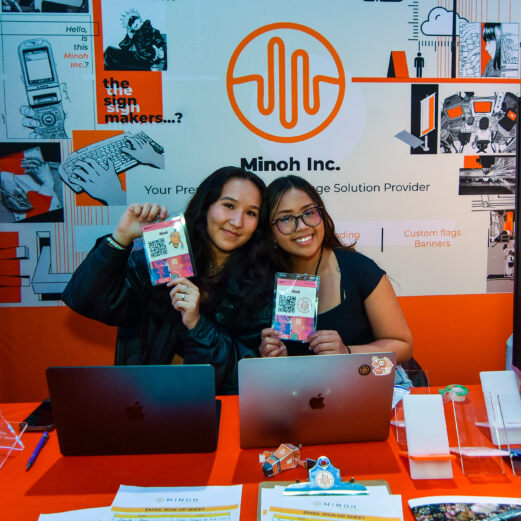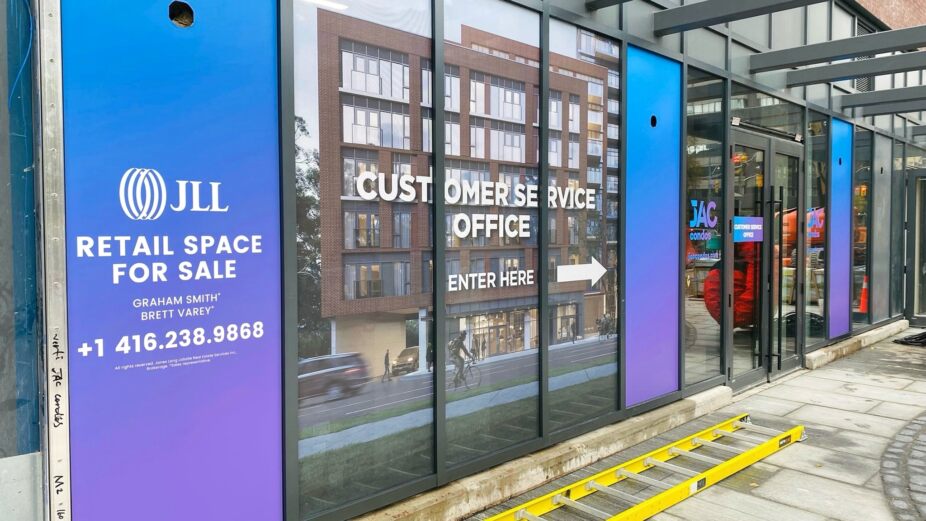Designing for Navigation: Minoh methodology for inclusive and consistent wayfinding
Interview with Marco Marin, Production Manager, Minoh
Signage partner for our 2024 DesignThinkers Conference in Toronto, Minoh Inc. shares its approach to crafting signage that enhances wayfinding, accessibility and visual appeal, along with strategies for consistency and solutions for complex environments.
Can you outline your methodology for designing signage?
Our methodology begins with thoroughly analyzing the environment and users' diverse needs. We prioritize establishing a clear visual hierarchy using size, colour contrast and legible typography, which helps facilitate intuitive navigation. Additionally, considering material specifications and project requirements, acknowledging that, as designers in the signage industry, we must think in three dimensions. This includes not only the aesthetics but also the engineering aspects necessary for feasible production. Accessibility is a core principle of our design process. We integrate multilingual options and tactile elements such as Grade 1 Braille, ensuring that visibility is enhanced for all users. The team at Minoh Inc. is well-versed in AODA guidelines, which serve as a crucial reference throughout our design process.
To enhance visual appeal, we explore innovative materials and dynamic display technologies. Collaboration with our production team allows us to create culturally relevant designs that resonate with the community, enriching our signage's aesthetic and functional aspects. Input from all collaborators—including sales, production and installation teams—ensures that we consider all perspectives, timelines and potential hazards in our final product.
DesignThinkers 2024




How do you ensure consistency in design across various types of signage?
Consistency is achieved through a comprehensive design guideline document that sets colour palettes, typography, iconography and material selection standards. We maintain extensive archives for each project, ensuring adherence to client brand guidelines and previous signage colour matches. We create specific design templates for each type of signage, fostering a cohesive visual language throughout our work. Regular audits and structured feedback from stakeholders help us uphold this consistency over time, ensuring alignment with brand identity and user experience goals. Close collaboration with designers and agencies allows us to meet visual expectations seamlessly.
What are the most common challenges you face when integrating wayfinding solutions into challenging environments?
Integrating wayfinding solutions in complex environments—such as construction sites or large public spaces—presents several challenges. Intricate layouts can hinder clarity, making a user-centric approach essential. Environmental factors like inconsistent lighting and regulatory compliance complicate the design process. Each project is unique, and we collaborate closely with client-side designers to align production expectations. Open communication with clients is vital, particularly regarding signage sizing and environmental considerations. Often, we must manage unrealistic timelines and set appropriate expectations to ensure smooth project execution.
Balancing the diverse priorities of stakeholders—clients, architects and others—while maintaining a cohesive solution can also be particularly challenging.





Have you worked on projects that required frequent updates or changes to the wayfinding system? How did you manage that?
We have managed projects requiring frequent updates by implementing a modular signage system for easy reconfiguration. This approach minimizes disruption and allows for efficient adjustments. Keeping a live tracking production timeline is essential to this process.
Digital signage solutions enable rapid content updates, ensuring that information remains current. We establish robust feedback mechanisms to gather user input and maintain clear documentation of the wayfinding system to facilitate smooth transitions. Ongoing communication with clients is a priority, as it empowers them to request updates as needed.
Educating clients on relevant regulations, such as MDA and SPA, is important to ensure our wayfinding systems align with legal requirements.
How do you see wayfinding design evolving in the next 5 to 10 years?
We anticipate a significant evolution in wayfinding design, marked by increased digitization and interactivity. Dynamic signage will likely become standard, providing real-time information and personalized user experiences through smart signage integrated with IoT technology. Augmented reality is set to enhance navigation, allowing users to visualize directions and contextual information in innovative ways. We also see a growing focus on inclusivity, with signage designed for colour-blind individuals and incorporating multimedia sensory feedback. As artificial intelligence becomes more prevalent, it may reduce designers' workload, enabling greater efficiency.
Sustainability will remain a key concern, with a shift toward eco-friendly materials and practices. Ultimately, we envision signage becoming a vital aspect of urban design, reflecting community identities and enhancing the overall navigational experience.
Marco Marin, Production Manager, Minoh
Tag
Related Articles






Udo Schliemann RGD, Entro








